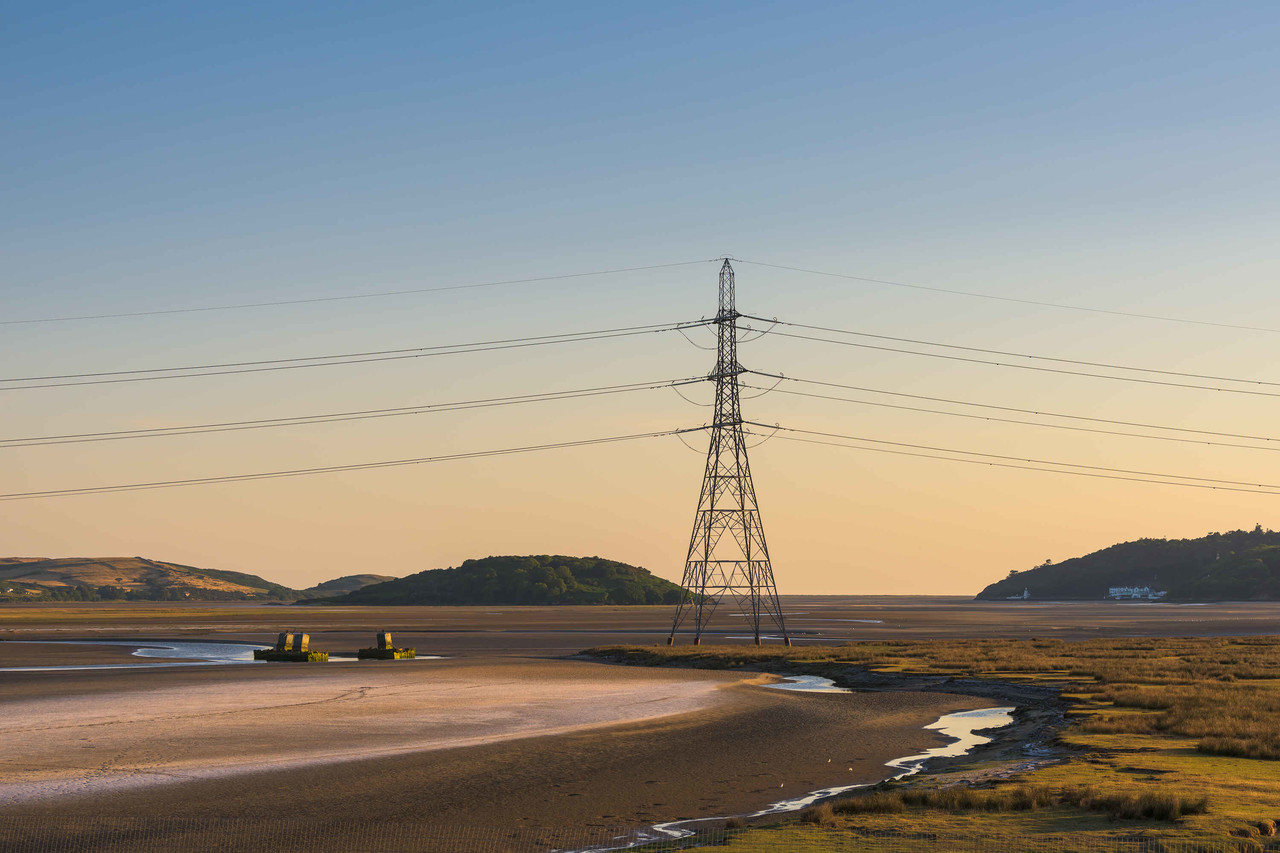

- National Grid and Hochtief UK are preparing the construction site for the Snowdonia Visual Impact Provision (VIP) project, with construction set to begin fully in 2023.
- Snowdonia VIP will see ten pylons and over 3km of overhead electricity line removed from across the Dwyryd Estuary.
- The project is designed to enhance the popular beauty spot for local people and visitors.
Work has begun in earnest on National Grid’s major landscape enhancement project to transform views across the Dwyryd Estuary, by removing ten pylons and an over 3km stretch of overhead electricity line.
The project will require major engineering work, with National Grid working with main contractor Hochtief UK to build a new tunnel underneath the estuary to house cables. The team will also construct two separate tunnel head houses located at Garth and Llandecwyn, which have been designed to complement the local landscape.
With expert guidance from Gwynedd Archaeological Trust, the team has recently begun a comprehensive programme of archaeological survey works in Garth. This is part of work to establish the construction site near National Grid’s existing land.
Ecological surveys and habitat management work have already taken place over the summer on the opposite side of the estuary in Llandecwyn, led by Mold-based Atmos consulting. This includes vegetation clearance, the installation of perimeter fencing and creation of ‘refugia’ to help safely trap and relocate reptiles from the site.
This initial site preparation work will be followed from 2023 onwards with a programme of shaft sinking, tunnel and head house construction, cable installation and commissioning. Pylon removal is expected to take place following this, in 2029.
Steve Ellison, National Grid senior project manager for Snowdonia VIP, said: “The VIP project is unique. It’s one of the very first projects in the world to remove existing high-voltage electricity transmission infrastructure solely to enhance the landscape. With the project set to take several years to complete, we’re absolutely focused on working with Hochtief UK to get it right.”
“The engineering challenges of the project require lots of different specialist skills to deliver it successfully, including the construction of a tunnel deep underneath the Dwyryd Estuary to house the new underground cables. The site preparation work we’re doing now is key to putting important foundations in place for the project.”
Jonathan Cawley, Snowdonia National Park Authority director, said: “The complex and dramatic Snowdonia landscape here seamlessly connects the popular tourist coastline of the National Park and adjacent upland areas.
“This is an exceptionally important project, which will enhance and protect this cherished landscape. Having additional workers in the area for around seven years will also be a welcome boost to our local businesses.”
Stakeholders have been at the heart of the project throughout, and the scheme has been designed and refined with the advice of local experts and community representatives.
National Grid will meet regularly with a Community Liaison Group throughout construction, which includes representatives from Gwynedd Council, Penryhndeudraeth Town Council, Talsarnau and Maentwrog Community Councils, the Snowdonia National Park Authority and more. The first meeting of the Group took place in June.
Steve Ellison added: “As we establish a presence in the area for the coming years, supporting the local community is at the heart of our plans. Groups including Penrhyndeudraeth Football Club are already benefiting from funding through National Grid’s Community Grant Programme – aimed at supporting fantastic projects which benefit local people.”
Snowdonia VIP is one of a number of National Grid projects in North Wales, including work to reinforce the electricity network between Dinorwig and Pentir and in Glaslyn.
Information on National Grid’s Community Grant Programme and how to apply can be found at nationalgrid.com/responsibility/community/community-grant-programme